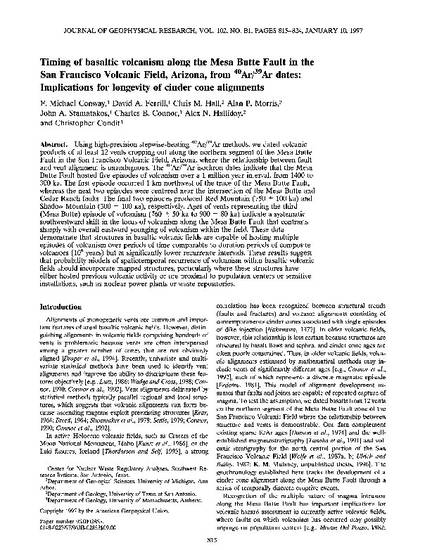
Using high‐precision stepwise‐heating 40Ar/39Ar methods, we dated volcanic products of at least 12 vents cropping out along the northern segment of the Mesa Butte Fault in the San Francisco Volcanic Field, Arizona, where the relationship between fault and vent alignment is unambiguous. The 40Ar/39Ar isochron dates indicate that the Mesa Butte Fault hosted five episodes of volcanism over a 1 million year interval, from 1400 to 300 ka. The first episode occurred 1 km northwest of the trace of the Mesa Butte Fault, whereas the next two episodes were centered near the intersection of the Mesa Butte and Cedar Ranch faults. The final two episodes produced Red Mountain (750±100 ka) and Shadow Mountain (300±100 ka), respectively. Ages of vents representing the third (Mesa Butte) episode of volcanism (760±50 ka to 900±80 ka) indicate a systematic southwestward shift in the locus of volcanism along the Mesa Butte Fault that contrasts sharply with overall eastward younging of volcanism within the field. These data demonstrate that structures in basaltic volcanic fields are capable of hosting multiple episodes of volcanism over periods of time comparable to duration periods of composite volcanoes (106 years) but at significantly lower recurrence intervals. These results suggest that probability models of spatiotemporal recurrence of volcanism within basaltic volcanic fields should incorporate mapped structures, particularly where these structures have either hosted previous volcanic activity or are proximal to population centers or sensitive installations, such as nuclear power plants or waste repositories.
Journal of Geophysical Research: Solid Earth, v. 102, issue B1, p. 815-824
Copyright 1997 by the American Geophysical Union.
Available at: http://works.bepress.com/charles_connor/100/
